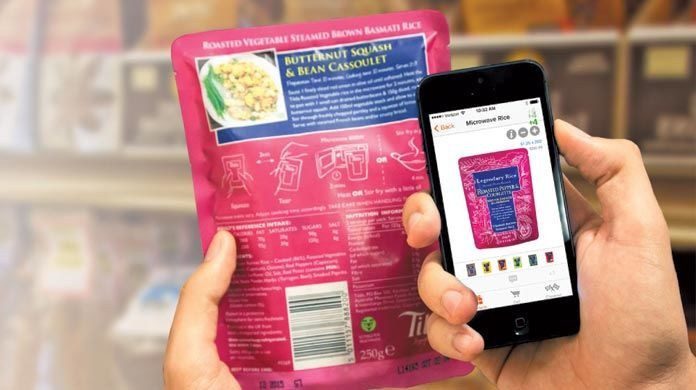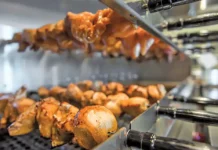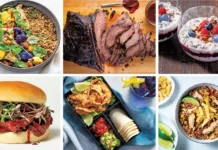
By Michael Elmgreen, Handshake
Food distribution and production accounts for over 12% of GDP and 17% of national employment in the United States each year, and foodservice distributors occupy a unique space in this massive supply chain. They must distribute a variety of highly perishable goods in small quantities to their customers, who need just enough stock delivered “just in time” to meet a high standard for freshness and quality.
Ensuring maximum freshness and minimum waste is made more difficult when foodservice distributors are unable to accurately predict how much inventory is required to meet customer needs. Demand can fluctuate dramatically from week to week and season to season. It’s also subject to trends – such as the rising popularity of organic foods and an emphasis on healthier eating – that impact customer demand over the longer term.
ERP and supply chain management systems have made significant improvements in the data available to manage inventory levels and the complex logistics needed to manage large inbound shipments of food. But while these technologies address some of the issues in the upstream supply chain, there has still been a gap in foodservice distributors’ ability to accurately understand and plan for demand, especially for smaller or midsize customers.
One of the biggest points of inefficiency can be found in the ordering process itself. For many foodservice distributors, customers calling or faxing in orders, staff performing manual order entry, and reps using paper order forms are all still common occurrences. To meet today’s foodservice distribution challenges, companies are looking to streamline the ordering process, digitize their product catalogs, and offer real-time access to inventory data––all from a smartphone or tablet.
They are achieving this with ordering applications on consumer mobile devices, which allow customers to browse products, check inventory availability, and place orders online 24/7.
What are the supply chain challenges that mobile ordering helps to address? Here are three of the most critical:
- Data Quality
- Delays
- Wasted Time and Inefficiency
Let’s look at these three in further detail.
Poor Data Quality
It wasn’t that long ago that most restaurant chefs and foodservice operators used paper catalogs, price lists, and phone calls to place their orders. In fact, many still do.
For foodservice distributors, this can mean poor data quality, due to the inefficiency of having to manually enter orders into an order management system for fulfillment. Assuming an error rate as low as 1% for manually entered orders, this still presents a significant problem with data quality. Inaccuracy results in waste, as well as stock outages that can negatively impact customer satisfaction when demand outstrips supply.
Web B2B eCommerce portals are one solution that food distribution companies are offering to make the ordering process more convenient. However, on its own, web B2B eCommerce has certain limitations. These B2B eCommerce sites are often difficult to use on a mobile device, forcing buyers to place orders from a desktop or laptop computer.
Mobile order entry offers a more streamlined alternative. Mobile ordering allows foodservice operators to enter orders directly into a mobile device, right from the stockroom, kitchen, or walk-in where they are taking inventory. With the ability to see inventory levels and availability, they can be sure that they’re ordering what’s in stock, and place orders immediately––without having to call the purveyor or wait for their order to be manually entered into the system.
This improves the quality of data, and also makes it possible to respond faster to unexpected fluctuations in demand, as information is able to flow much more quickly and seamlessly.
Delays
Many food distribution customers order and reorder products on a regular schedule. Whether that schedule is daily, weekly or monthly depends on the needs of the customer and the ability of the distributor to schedule time with customer service or sales reps.
In this process, when unexpected fluctuations in stock levels occur, the customer must wait to reorder certain items, or place special orders to restock those items.
With mobile order entry tied to a B2B mobile commerce system, some of these bottlenecks can be alleviated. Customers can enter orders on their own schedules, rather than the schedules of their distributors, and distributors can provide reorders more quickly. Better access to data in near-real time also allows food distributors to more accurately predict customer demand.
Wasted Time and Inefficiency
One major challenge for food distributors, especially those that are still relying on paper processes, is the time it takes for sales and customer service reps to manually enter orders and field phone calls from customers.
Food & beverage distributors that are using mobile order writing technology report that they are seeing 50% to 75% increases in order writing speed. This allows them to serve more customers, and do so much more quickly.
Orders can be entered primarily by the customers themselves, which means distributors can dedicate less time to administrative tasks, and more time on strategically partnering with customers to plan menus, go over promotions, and increase profit.
Food supply chains are extremely complex, but as mobile technology becomes more commonplace, foodservice distributors will be able to eliminate much of the waste that currently results from inaccurate demand forecasting and serve customers more profitably.
This article originally appeared on B2B Commerce Digital.























